The Dire Wolf: Ice Age Apex Predator and Modern Legend
We're fascinated by the dire wolf, a formidable Ice Age predator that roamed the Americas until its extinction approximately 10,000 years ago
A couple of weeks ago, Colossal Biosciences announced the birth of three genetically engineered wolf pups—Romulus, Remus, and Khaleesi—claiming them as the first "de-extincted" dire wolves. By editing 14 genes in grey wolf cells to express 20 traits associated with the extinct dire wolf, and implanting the embryos into surrogate dogs, the company aimed to recreate the ancient species.
The move was somewhat controversial, and I covered this controversy in my previous post. Many scientists criticized the claim, noting that dire wolves and grey wolves diverged millions of years ago and differ by hundreds of thousands of genetic markers. Experts argue that the resulting animals are genetically modified grey wolves rather than true dire wolves, raising concerns about the scientific validity and ethical implications of such de-extinction efforts.
However, the move also got me thinking about our recent fascination with the dire wolf. The species has been extinct now for roughly 10,000 years but was one of the most formidable predators of the Pleistocene epoch. Today it looms larger than ever in our collective imagination, from scientific lore to television fantasy. What was the dire wolf, in life? How did it live and die? And why does this prehistoric animal continue to captivate us, from the tar pits of Rancho La Brea to the pages of Game of Thrones?
What Was the Dire Wolf?
The dire wolf (Aenocyon dirus) was the largest wild canine of Late Pleistocene North America. In size and stature it was comparable to the biggest grey wolves alive today – animals that stand about 3 feet (around 97 cm) at the shoulder and 5 to 6 feet (1.5–1.8 m) long from nose to tail. Many dire wolf individuals would have weighed in at 60–70 kg (130–150 lbs) on average, significantly heavier than most modern wolves. Its build was robust: the dire wolf had a broader, heavier skull and jaw than a grey wolf of equivalent size, with teeth that were larger and more massive. A full-grown dire wolf’s skull measured as much as 12 inches (30 cm) from end to end – built to deliver a crushing bite. Indeed, analyses of bone fossils suggest dire wolves had an exceptionally strong bite force, an adaptation for tackling large prey and crunching through bone. Many fossil jaws show chipped and broken teeth, hinting that these carnivores frequently gnawed on carcasses and cracked bones to get at the marrow.
Despite its fearsome anatomy, the dire wolf would have looked roughly like a very big, thick-set grey wolf. Imagine a wolf with a slightly larger head, shorter legs in some populations, and perhaps a reddish or dark coat (though we can only speculate on coloration). Its feet were a bit smaller relative to its body than a grey wolf’s, which might mean slightly less agility or sprinting speed. But in Ice Age environments filled with lumbering megafauna, ambush and brawn may have mattered more than marathon speed. Palaeontologists have identified two regional variants (formerly thought of as subspecies) of dire wolf: one from the western U.S. (sometimes called A. dirus guildayi) that had somewhat shorter limbs, and an eastern form (A. dirus dirus) with longer legs. Both were big, powerful predators, but the western dire wolves may have been slightly less adapted for long-distance running, perhaps relying more on stealth or group tactics in the relatively warmer, more forested landscapes of California and Mexico.
The name “dire wolf” itself reflects its imposing reputation. The species was first identified in the 1850s, when geologist Francis Linck fished out some large fossilized wolf bones from an Indiana riverbank. In 1858 the eminent palaeontologist Joseph Leidy examined these remains (along with others found in Nebraska) and gave the creature its scientific name: Canis dirus, meaning “terrible wolf” in Latin. It was an apt moniker. The dire wolf’s bones spoke of a formidable hunter, and additional discoveries would soon cement its status as a legendary Ice Age beast.
Fossils of dire wolves have since been found across a huge swath of the Americas – from Alaska down to Florida in the north, and all the way to Bolivia in South America. They thrived from the frigid grasslands of the northern mammoth steppes to the tropical savannas of what is now Venezuela. The oldest dire wolf remains date to around 250,000 years ago, and the youngest to roughly 10,000 years ago, meaning these animals endured through multiple glacial cycles before vanishing at the end of the last Ice Age.
Evolutionary Origins: A Wolf That Wasn’t Quite a Wolf
For more than a century, scientists assumed the dire wolf was simply a beefed-up cousin of the grey wolf (Canis lupus). The two looked so much alike in their skeletons that many palaeontologists believed they must have shared a recent common ancestor. Some even hypothesized that dire wolves might have arisen from ancient grey wolves that migrated to the Americas and grew larger in response to abundant prey. However, recent breakthroughs have dramatically rewritten the dire wolf’s backstory. In 2021, a team of researchers managed to extract DNA from dire wolf fossils and sequenced five genomes. The genetic evidence revealed a bombshell: despite the physical resemblance, dire wolves were a highly divergent lineage, one that split off from the ancestors of living wolves around 5.7 million years ago. In other words, dire wolves weren’t “wolves” in the sense of being close kin to grey wolves at all – their line had been marching to its own beat since deep in the Ice Age past.
The DNA data showed that dire wolves are so distant from grey wolves, coyotes, and dogs that they could not interbreed with those species. This is striking, because most canid species can hybridize to some degree (modern wolves, coyotes, and dogs, for instance, frequently mix genes in the wild). The absence of any genetic mingling between dire wolves and grey wolves suggests that, even if they coexisted in North America toward the end of the Pleistocene, they were biologically incompatible or kept separate by ecological or behavioural barriers. The study’s authors concluded that dire wolves likely evolved in isolation in the Americas, while grey wolves (and their coyote relatives) evolved in Eurasia and only arrived in North America relatively late, during the Ice Age. This isolation gave the dire wolf a long time to develop its unique traits.
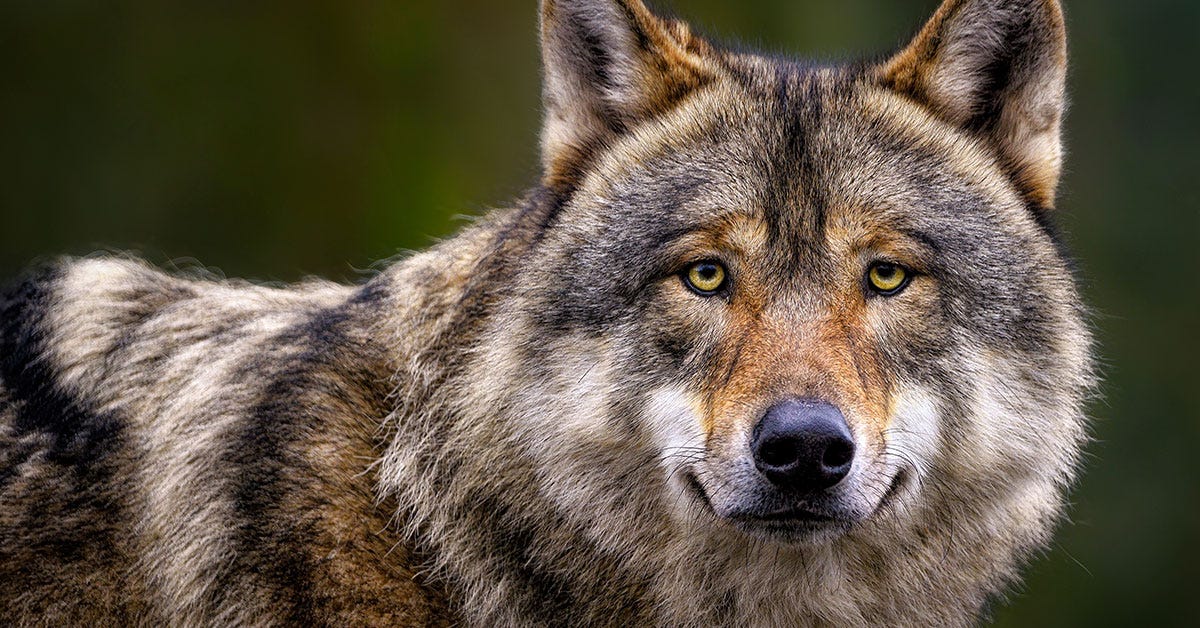
In light of these findings, palaeontologists have reconsidered how they classify the beast. Some now favour resurrecting an old genus name, Aenocyon, originally proposed in 1918, which means “terrible dog” and emphasizes that the dire wolf stands apart from Canis (the genus that includes true wolves, coyotes, and jackals). Under this updated classification, the dire wolf’s full scientific name is Aenocyon dirus. Fittingly, Aenocyon dirus was truly a “terrible dog” – not just in name, but as the last survivor of an ancient lineage of New World canids. In fact, genetic analysis hints that the dire wolf’s closest living relatives might be African jackals rather than grey wolves. It appears that the dire wolf’s wolf-like form (large, pack-hunting, and heavily built) was a case of convergent evolution: nature arriving at a similar design in two distant branches of the dog family because they filled similar ecological roles.
Exactly how the dire wolf’s lineage began is still a subject of research. The fossil record suggests that ancestors of Aenocyon dirus could trace back to other large canids that lived in North America millions of years ago. One contender is the Armbruster’s wolf (Canis armbrusteri), an earlier Pleistocene wolf species that appeared in North America about 1.5 million years ago – some scientists think C. armbrusteri might have given rise to dire wolves. Others point out an even older progenitor: fossils of a wolf-like canid in China (Canis chihliensis) that might have been the ancestor of both the gray wolf and Armbruster’s wolf, which then immigrated to America. If that’s true, the dire wolf’s family tree could involve an ancient migration from Asia followed by long, separate evolution in the Americas. No matter the precise origin, by the time dire wolves were prowling the Pleistocene plains, they were genetically unique – so much so that palaeontologist Xiaoming Wang quipped that, when the DNA evidence came out, it “gave me a chill, in a good way,” upending a century of assumptions about these creatures.
Apex Predator of the Ice Age
During the late Pleistocene, roughly 50,000 to 15,000 years ago, North America teemed with gigantic mammals. There were Columbian mammoths and mastodons trudging across grassy valleys, herds of giant bison and camels, herds of wild horses, and ground sloths the size of oxen. This megafauna would have been the primary food source for dire wolves. Isotopic analysis of dire wolf bones – essentially reading the chemical signatures left by their diet – indicates they fed heavily on large herbivores. In particular, studies of fossils from Rancho La Brea (the tar pits) show that horses were one of their most important prey species, with substantial contributions from bison, camels, and ground sloths as well.
Unlike the famously specialized sabre-toothed cat (Smilodon), which may have been an ambush predator adapted to taking down very large prey in specific ways, the dire wolf does not seem to have been a picky eater. They were generalist hypercarnivores – meat-eaters through and through, but willing to hunt or scavenge whatever sizable prey was available. As one study put it, by the end of the Pleistocene the dire wolves were hunting or scavenging “the most available herbivores,” rather than focusing on one species.
Fossil evidence paints a picture of dire wolves as social predators, much like modern grey wolves. The sheer abundance of their remains at certain sites supports this. At Rancho La Brea in Los Angeles, more than 4,000 dire wolf individuals have been unearthed – an astonishing number, making it the single richest dire wolf site in the world. Dire wolf bones vastly outnumber those of any other large canid there, outnumbering grey wolf remains by about 5 to 1. Palaeontologists believe this skew is no accident of preservation; it likely reflects behaviour.
The most widely accepted scenario is that dire wolves, traveling in packs, were lured into the tar pits while chasing or scavenging trapped prey. One large herbivore stuck in the asphalt would attract a whole pack of hungry wolves, and in their frenzy those wolves too became mired in the tar. The result: a predator trap that accumulated bones over centuries. The fact that both dire wolves and sabre-toothed cats are so common in the tar pits (while solitary predators are rarer) implies these animals operated in groups. All those wolves didn’t die in one single incident, of course, but over time the tar pits captured many episodes of dire wolves answering a distress call from what seemed like an easy meal. The tar preserved their skeletons in stunning numbers for modern scientists to discover.
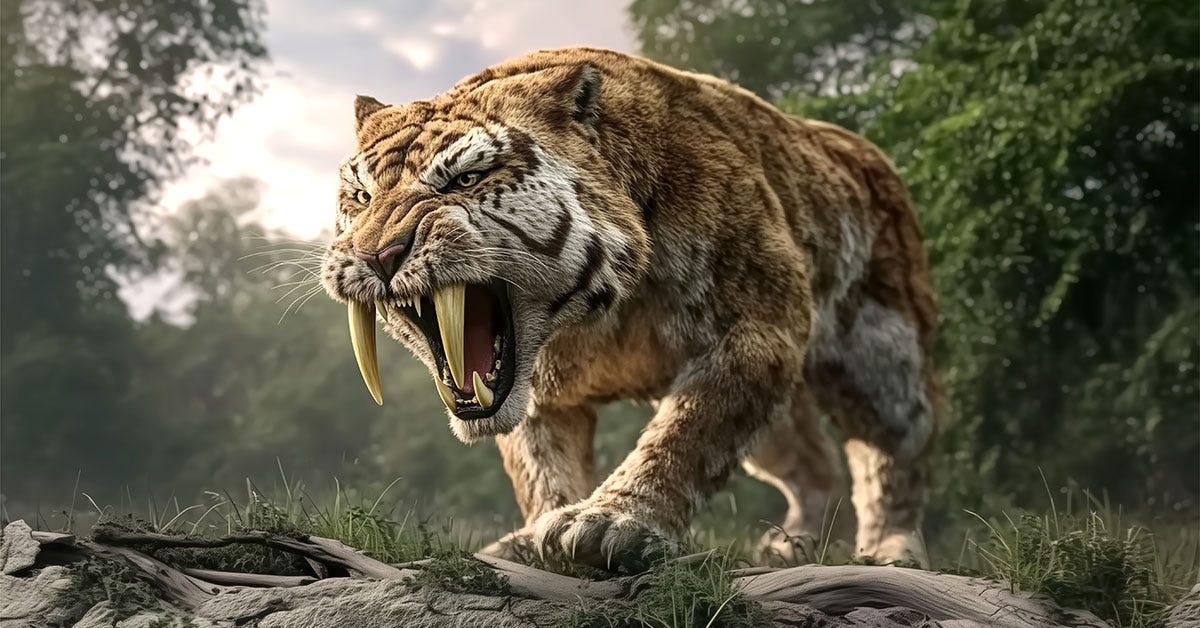
From such sites we’ve learned not only about dire wolf diet but also their life history. Remains of multiple individuals suggest pack dynamics – perhaps family groups with adults and younger members. Palaeontologists have noted sexual dimorphism in dire wolves: males were somewhat larger and more robust than females on average. This size difference is similar to modern wolves and hints that dire wolves, too, had social hierarchies and mating competitions where larger size could be advantageous (for example, male wolves often fight for dominance or breeding rights).
A recent analysis even examined the dire wolf’s baculum (the penile bone found in male canids) and found it to be proportionally larger than in any living wolf species, which one might speculate is related to intense competition or complex mating behaviour in this extinct species. While we can’t directly observe their behaviour, it’s reasonable to think dire wolf packs cooperated to hunt large game, much as wolf packs do today – perhaps even more so, given that their prey included 2-ton mammoths and giant ground sloths.
Though dire wolves lived alongside truly enormous herbivores, they probably most often preyed on the juveniles or smaller-sized megafauna. Isotope evidence from later Pleistocene dire wolves suggests a primary focus on juveniles of large species like bison and camelids, as well as sloths. An adult mammoth or mastodon would have been a dangerous target even for a pack of 10 dire wolves, but a young mammoth separated from its mother might have been within their capabilities. Dire wolves also likely scavenged frequently. If a big herbivore died or a pride of sabre-toothed cats made a kill, a pack of dire wolves would eagerly crash the party and strip the carcass of anything edible. In doing so they sometimes crushed bones and inadvertently broke their teeth – a common fate for carnivores that live by the creed of “waste not, want not.”
One study of La Brea fossils found that 5–17% of dire wolf teeth examined had some form of fracture, a higher rate than in most modern carnivores. This suggests fierce competition: dire wolves were likely consuming carcasses with such urgency, and biting through tough hide and bone, that their teeth paid the price. (Interestingly, those fracture rates seem to decline in fossils from near the very end of the Pleistocene, hinting that as other large predators died out, dire wolves might have faced less competition and could afford to be a bit less bone-crunching.)
Dire wolves didn’t rule the Ice Age ecosystem alone; they shared the stage with other apex predators. The La Brea Tar Pits offer a unique snapshot of this Pleistocene predator guild. Alongside thousands of dire wolves are the remains of hundreds of Smilodon fatalis, the sabre-toothed cat, and also the American lion (Panthera atrox), giant short-faced bears (Arctodus), coyotes, and more. Isotopic analysis has confirmed that dire wolves, sabre-toothed cats, and American lions all competed for the same prey in these ecosystems. All three would have hunted camels, horses, bison, and sloths in the grasslands and woodlands of Pleistocene America.
One can imagine a grim scene that might have played out 15,000 years ago: a Columbian mammoth, weakened by age or injury, becomes trapped in a sticky tar seep oozing from the ground. As the mammoth bellows and struggles, predators converge. A Smilodon arrives first, drawn by the prospect of an easy kill, but it too gets stuck in the tar. Soon, a pack of dire wolves shows up – five, maybe ten individuals circling the distressed giant. In their frenzy to claim the prize (or possibly to scavenge the already dying cat and mammoth), several wolves dart onto the tar and also become trapped. The rest of the pack can only watch helplessly as their packmates sink. Thousands of years later, scientists unearthing the tar pits find the bones of that mammoth, the smilodon, and the dire wolves all mingled together. It’s a tableau that tells of both intense competition and opportunism in the dire wolf’s world.
When and Why Did It Disappear?
Around 11,000 to 10,000 years ago, the dire wolf – along with the majority of the Ice Age megafauna – vanished. The extinction of the dire wolf occurred during the Quaternary extinction event at the end of the Pleistocene. Fossil dates show Aenocyon dirus surviving up to the very cusp of the Holocene (the epoch we’re in now), then no more. The timing aligns with a period of rapid environmental upheaval: the Ice Age was ending, climates were warming dramatically, and ecosystems were transforming.
In North America, this was also the time when the last mammoths, mastodons, giant ground sloths, and many other large mammals died out. Dire wolves, which had thrived for hundreds of thousands of years, suddenly lost most of their main prey species. Horses, camels, and the large bovids that dire wolves hunted either went extinct or suffered steep declines around this time. It appears the dire wolf was heavily reliant on megaherbivores, and as those animals disappeared, the dire wolf had little to fall back on.
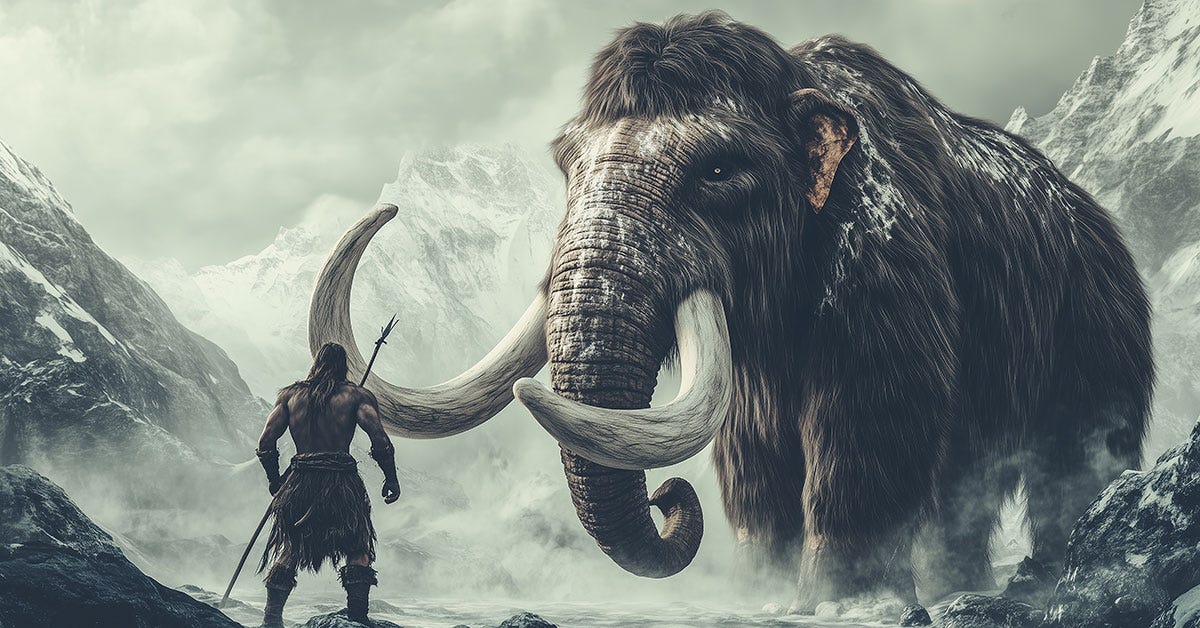
Scientists propose a combination of factors behind the dire wolf’s extinction. Climate change was undoubtedly a major driver – as the glaciers receded, habitats like the cold northern grasslands shrank or shifted, possibly reducing the range for some dire wolf populations. At the same time, humans had arrived in the Americas (the first Paleoindian cultures) and were hunting some of the same big game. Human hunting, alongside climate shifts, likely decimated populations of prey species such as the American horse and camel. While it’s not clear that humans ever directly targeted dire wolves (we have no evidence of that, unlike for mammoths or bison), the loss of prey would have indirectly sealed the dire wolf’s fate.
Another factor could be competition with other predators that managed to survive into the Holocene. The smaller and more adaptable grey wolf is one example. Grey wolves (which had entered North America from Asia relatively late in the Pleistocene) and coyotes both made it through the extinction event, perhaps because they could subsist on smaller prey like deer, rabbits, and rodents once the megafauna were gone. The dire wolf, in contrast, may have been less adept at hunting quick, small animals; its whole build and strategy were tuned to large prey. As one summary puts it, the dire wolf disappeared “along with its main prey species,” likely due to its heavy reliance on those megafauna, in combination with the changing climate and competition from other species. In short, as the world changed, the dire wolf couldn’t change quickly enough.
It’s worth noting that the extinction of the dire wolf was part of a much larger wave of Ice Age extinctions. Roughly 90 genera of large animals (animals over 44 kg) went extinct in North America around the end of the last glaciation. The dire wolf was one of the last of a long lineage of big New World canids; when it fell, it marked the end of an evolutionary story tens of millions of years old. By about 10,000 years ago, the once-crowded carnivore guild of Pleistocene America had been reduced to just a few members: grey wolves, coyotes, bears, mountain lions, and humans – a far cry from the days when dire wolves howled alongside sabre-toothed cats and lions.
From La Brea to Game of Thrones: The Dire Wolf in Popular Imagination
Although dire wolves are gone from the living world, they have never been forgotten. In fact, these predators occupy a special place in both scientific and pop-cultural consciousness. Their fossils were among the first extinct carnivore remains to be studied in America, and ever since the 19th century discovery, palaeontologists and museum-goers alike have been fascinated by the “terrible wolf.” Nowhere is this fascination more evident than at the La Brea Tar Pits. The museum at La Brea proudly showcases the largest collection of dire wolf fossils on earth – those hundreds of skulls mounted on the wall are a dramatic testament to the species’ past abundance. As Dr. Emily Lindsey, a curator at La Brea, points out, “There’s no other site on Earth that even comes close” to the Tar Pits’ trove of dire wolf remains. The Tar Pits have essentially become synonymous with dire wolves, to the point that the species is an unofficial mascot of Pleistocene California.
The allure of the dire wolf extends beyond academic circles. In modern pop culture, the dire wolf has taken on almost mythical status. Perhaps the biggest boost to its fame came from George R.R. Martin’s A Song of Ice and Fire novels and the HBO series Game of Thrones. In that fantasy world, “direwolves” are enormous, supernatural wolves that bond with the Stark family – practically the size of ponies and endowed with fierce loyalty. The show’s popularity introduced the very term “dire wolf” to millions of people who might not have known it was a real creature. Indeed, one science writer noted that Game of Thrones helped popularize dire wolves, reminding the public that these were not just fantasy but real animals that lived alongside giants like mammoths. (Of course, the TV direwolves were exaggerated in scale – the real ones were large, but not the size of horses!) The cultural cachet of the dire wolf is such that it even features in songs (the Grateful Dead have a classic called “Dire Wolf”) and countless video games and role-playing games, usually as a symbol of primordial ferocity.
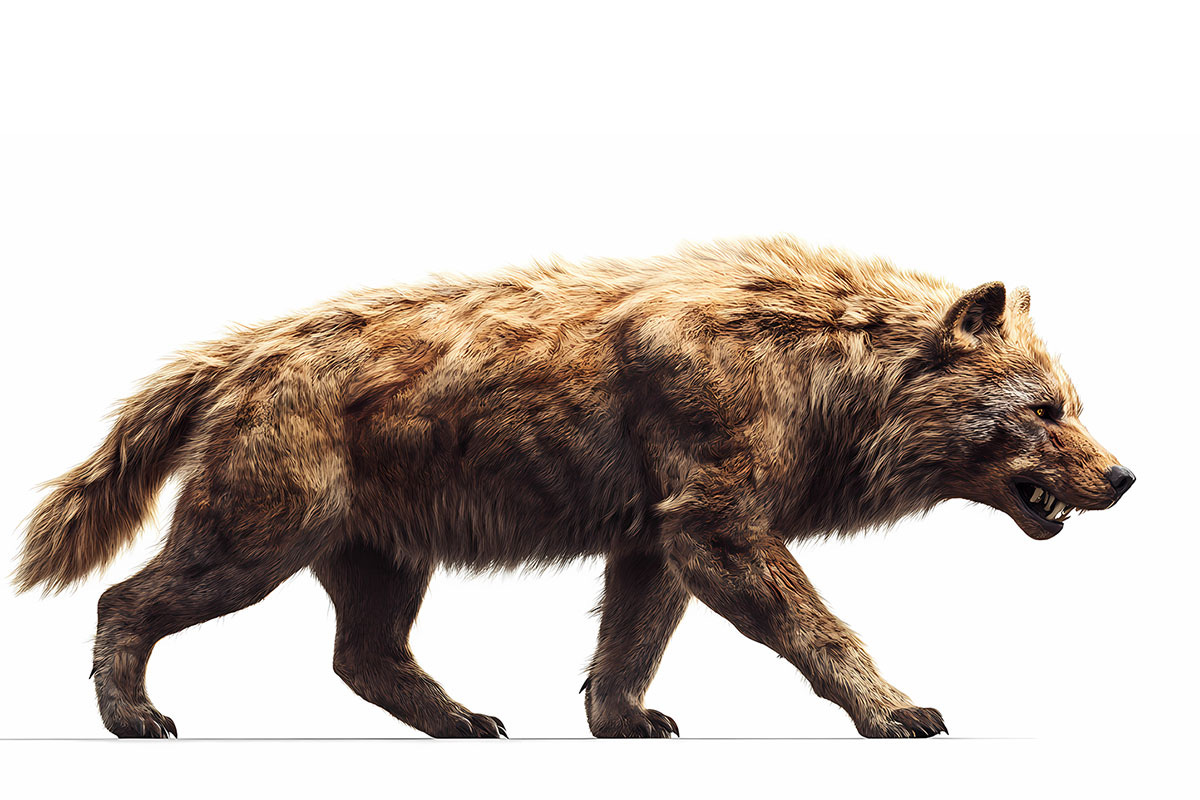
Why does the dire wolf captivate us in particular? Part of the reason may be its very name and image. “Dire wolf” conjures an image of something frightening and otherworldly, a wolf but more so – bigger, meaner, a predator from a lost age. Unlike some Ice Age creatures which feel very foreign (giant ground sloth, anyone?), the dire wolf is relatable because we’re familiar with wolves. It’s the familiar turned up to eleven. It takes something we find majestic and fearsome in the modern wilderness (the grey wolf) and gives it an extra twist of legend. The dire wolf sits at an intersection of natural history and imagination: it was a real animal, leaving behind tangible bones and teeth, yet it slots so easily into myth.
In the La Brea Tar Pits, dire wolves are presented as an integral part of the prehistoric ecosystem, an apex predator among apex predators. In fantasy stories, they are emblematic of the untameable wild or the old magic of the world. This dual life in science and storytelling keeps the dire wolf consistently in the public eye.
From the bones in the asphalt pits of Los Angeles to the CGI creatures on television, the dire wolf straddles a line between reality and legend. In reality, it was one of the top predators of Ice Age America, a social, bone-crushing canid that thrived for eons before vanishing in the great extinction that claimed so many Pleistocene beasts. In legend, it lives on as a symbol of that lost world – a world not so long ago, geologically speaking, yet profoundly different from our own. The fascination it evokes helps drive new scientific inquiries: every new fossil, every new DNA analysis is covered eagerly by the press, and museum exhibits featuring dire wolves remain crowd favourites. As palaeontologist Julie Meachen once said, “Dire wolves are cool. People love dire wolves.” And indeed, as long as we continue to unearth their remains and tell their story, the dire wolf will never truly die in our minds.
It’s remarkable to think that an animal gone for 10 millennia still has such a hold on us. The dire wolf’s legacy is a reminder of the ever-changing nature of our planet – and a humbling testament to how much we have yet to learn about the rich tapestry of life that came before us. In the next instalment of this series, we will venture from the past into the future: examining the bold attempts to revive the dire wolf (in one form or another) and what such scientific endeavours mean for conservation, ethics, and the boundary between fantasy and reality. For now, standing before that wall of dire wolf skulls at La Brea, one can’t help but feel a connection across time – a mix of awe and wonder at these canis terribilis, the legendary dire wolves that once were, and might one day be again.

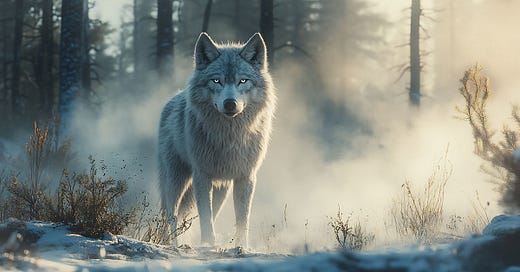



Excellent article.